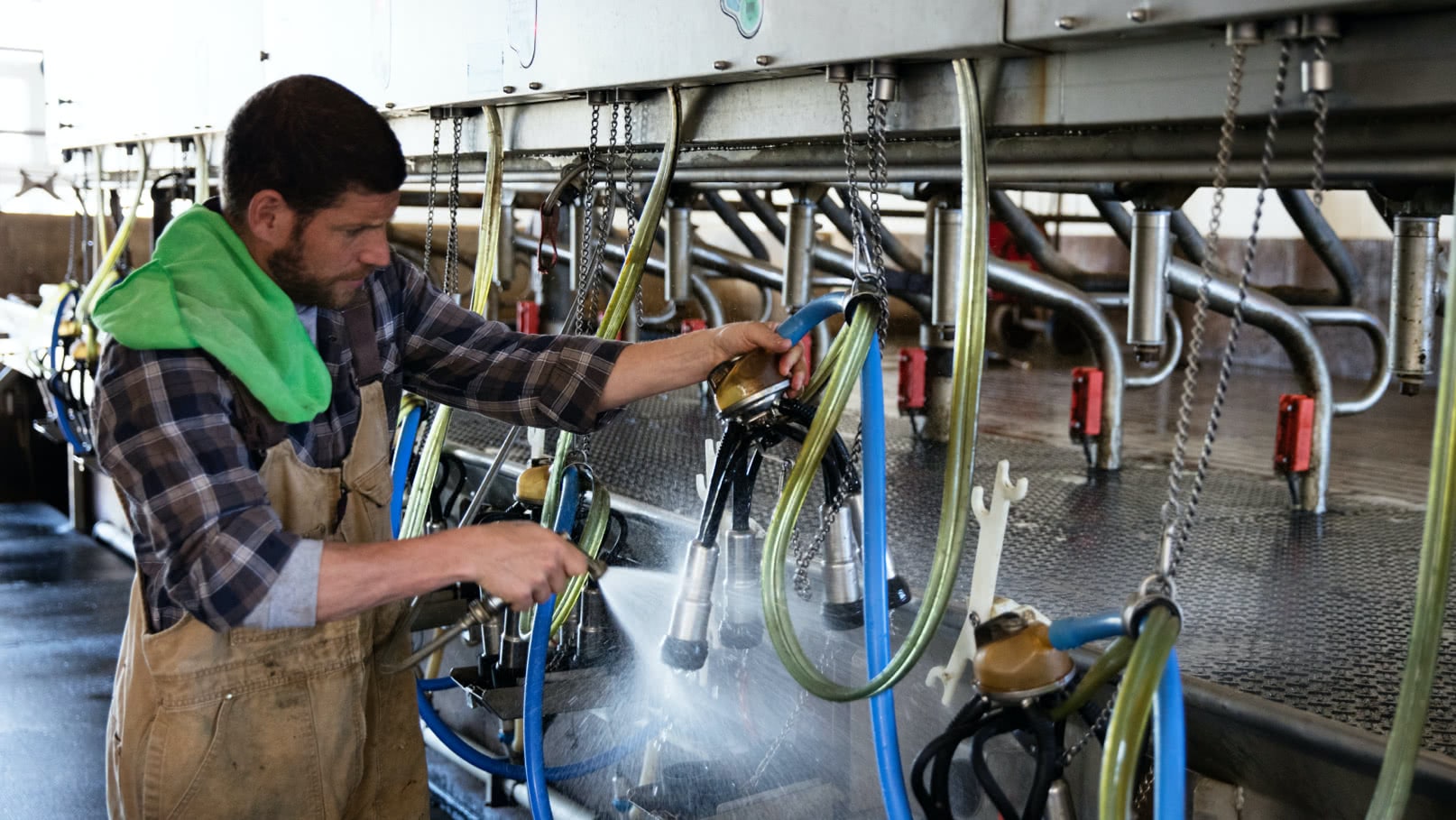SUSTAINABILITY
SUSTAINABLE FARMING

Recycling methane to reduce carbon use
Methane, a greenhouse gas, is a natural by-product of a cow's digestive process. Ongoing research and innovation have helped reduce the amount of methane cows produce, while helping increase their milk production. The overall goal is to have less methane produced per litre of milk. The carbon footprint of Canada's milk production is currently 0.92 kg of CO2 per litre, which is among the lowest in the world.

Making the most of the land
In addition to producing milk, many Ontario dairy farms grow hay and grains to feed the herd. Perennial crops, such as alfalfa and grass, can help stabilize soil while transferring carbon from the air, helping reduce greenhouse gas emissions.

Conserving resources
The three Rs of conservation are as important on the farm as they are in your home. Water used to clean feed alleys in the barn is often reused to irrigate crops, and cow manure is used as fertilizer. Some Ontario dairy farms use biogas digesters to reclaim methane from cow manure. The methane can be diverted and used to generate electricity while the remaining by-products can be used for fertilizer and even bedding for cows.

Biosecurity
Protecting the herd from diseases is an important part of running a safe and healthy operation. Dairy farmers follow strict guidelines developed by the Canadian Food Inspection Agency to help reduce the risk of infection. These include twice daily cleaning procedures, segregation of newly arrived cows, and sanitary protocols for visitors.
SUSTAINABILITY BY THE NUMBERS
Just 1.7 m2 of land
It now takes just 1.7 square metres of land to produce one litre of milk – about the same amount it takes to produce a loaf of bread.
6% less water
Water consumption was reduced by 6% on Canadian dairy farms between 2011 and 2016.
65% fewer cows
It takes 65% fewer cows to produce milk for all of Canada compared to 50 years ago.
